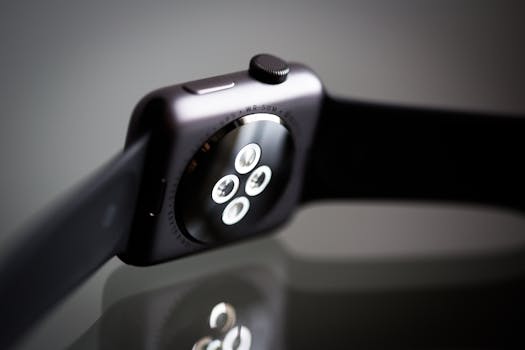
Tech-Infused Clothing: The Future of Fashion in 2025
Takeaways:
- Tech-infused clothing is revolutionizing the way we perceive fashion.
- Smart fabrics enhance functionality, comfort, and style.
- Wearable technology is leading to personalized fashion experiences.
- Sustainability is a primary concern driving innovation in tech-infused clothing.
- The integration of AI and IoT is set to redefine the shopping experience.
As we approach 2025, the fusion of technology and fashion is no longer a distant dream but a vivid reality. Tech-infused clothing is on the rise, promising to redefine our wardrobe staples and elevate our daily experiences. In this article, we will explore the cutting-edge innovations in smart fabrics, wearable technology, and the sustainable practices shaping the future of fashion.
The Evolution of Fashion Technology

The Rise of Smart Fabrics
Smart fabrics, also known as e-textiles or intelligent textiles, are textiles that can sense and respond to environmental stimuli. They are designed to provide enhanced functionality while maintaining comfort and style. Some notable innovations in smart fabrics include:
- Wearable Health Monitors: Clothing embedded with sensors that monitor vital signs, physical activity, and even stress levels. These garments can provide real-time feedback to users, allowing them to manage their health proactively.
- Temperature Regulation: Fabrics that can adapt to body temperature changes, keeping the wearer comfortable in various environments. This technology uses phase-change materials or thermoregulating fibers.
- Interactive Textiles: Fabrics that incorporate LED lights or conductive threads, enabling wearers to change colors or patterns on-demand, making fashion truly customizable.
These advancements are not just about aesthetics; they offer practical solutions to everyday challenges. For instance, a garment that can monitor your heart rate could be invaluable for athletes, while temperature-regulating fabrics could enhance comfort for outdoor enthusiasts.
Wearable Technology: A Game Changer

Integrated Smart Devices
Imagine a jacket that can charge your devices or pants that provide haptic feedback for navigation. These innovations are on the horizon:
- Smart Accessories: Items like belts and bags that incorporate technology, offering features like GPS tracking or built-in speakers.
- Augmented Reality (AR) Fashion: Clothing that interacts with AR applications, allowing users to visualize different styles or colors through their smartphones.
- Fitness and Performance Monitoring: Athletes will benefit from apparel that tracks performance metrics, providing insights into their training regimens.
The integration of technology into clothing is not just about utility; it enhances the user experience, providing personalized and interactive fashion solutions.
Sustainability and Ethical Fashion

Eco-Friendly Materials
In 2025, we expect to see a significant rise in the use of eco-friendly materials in tech-infused fashion. Innovations include:
- Biodegradable Textiles: Fabrics made from natural fibers that decompose without harming the environment.
- Recycled Materials: Garments created from post-consumer waste, reducing the need for new resources.
- Waterless Dyeing Technologies: Techniques that minimize water usage in the dyeing process, significantly reducing environmental impact.
Supply Chain Transparency
Technology is also enhancing transparency in the fashion supply chain. By 2025, consumers will demand to know the origins of their clothing. Innovations include:
- Blockchain Technology: Utilizing blockchain to provide traceability for materials, ensuring ethical sourcing.
- Smart Tags: RFID tags embedded in clothing that provide information about the garment’s lifecycle and sustainability practices.
Through these practices, tech-infused clothing not only addresses the environmental concerns of today but also paves the way for a more sustainable future in fashion.
The Role of AI and IoT in Fashion

Personalized Shopping Experiences
AI will enable brands to create personalized shopping experiences based on consumer behavior and preferences. Innovations include:
- Virtual Fitting Rooms: AR technology allowing customers to try on clothes virtually, reducing return rates and enhancing user satisfaction.
- AI-Powered Recommendations: Algorithms analyzing shopping habits to suggest products tailored to individual tastes.
Smart Retail Environments
IoT devices will transform retail spaces into smart environments. Expect to see:
- Connected Mirrors: Mirrors that display outfit options and allow customers to see how garments fit without trying them on.
- Inventory Management Systems: Automated systems that track stock levels and predict trends, ensuring stores are always stocked with in-demand items.
The combination of AI and IoT will create a more efficient, personalized, and enjoyable shopping experience for consumers, aligning perfectly with the tech-infused clothing trend.
Challenges and Considerations

Privacy and Data Security
As clothing becomes more connected, concerns about privacy and data security will rise. Consumers must be assured that their data is protected. Regulations and standards will need to be established to safeguard personal information.
Affordability and Accessibility
The integration of technology into clothing typically raises costs. Ensuring that tech-infused clothing is affordable and accessible to a broader audience will be crucial for widespread adoption. Brands must find ways to balance innovation with cost-effectiveness.
Consumer Education
As technology evolves, consumer education will be essential. Brands will need to inform customers about the benefits and functionalities of tech-infused clothing to drive acceptance and enthusiasm.
Conclusion

